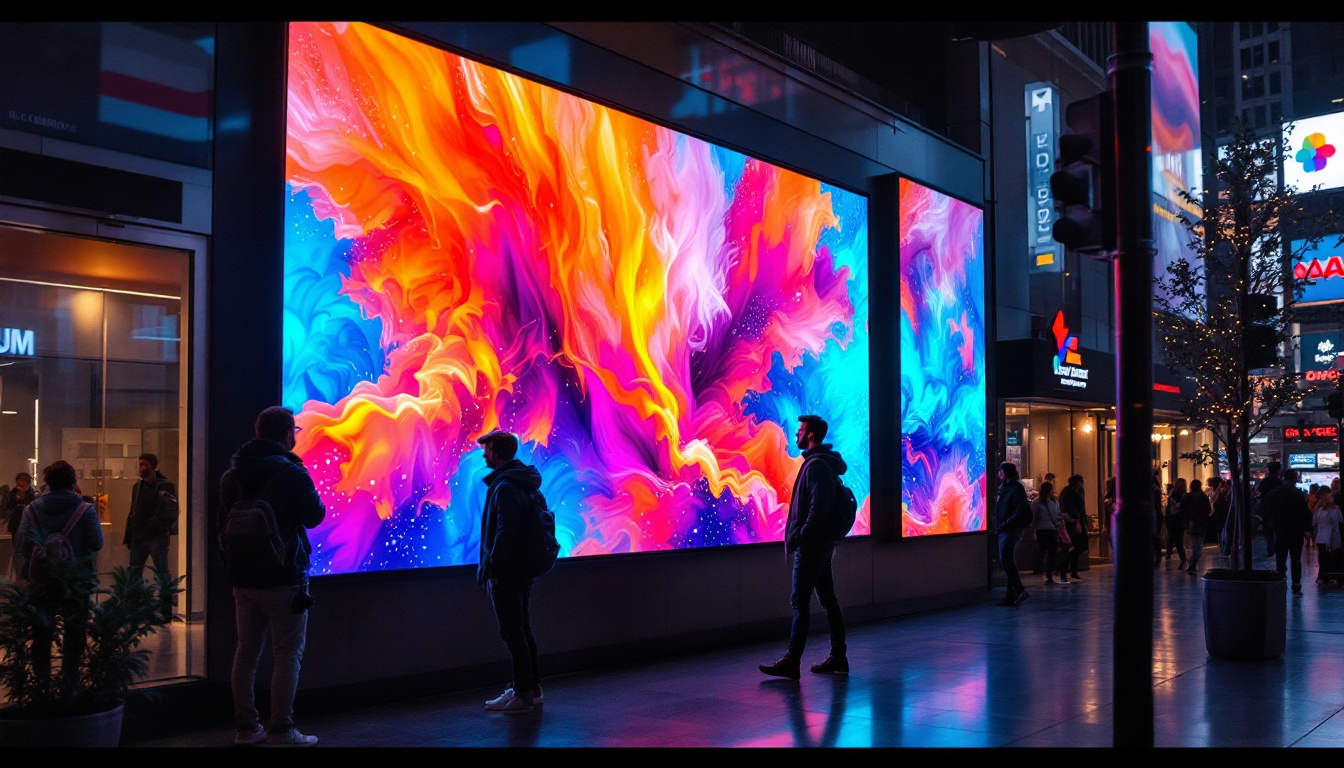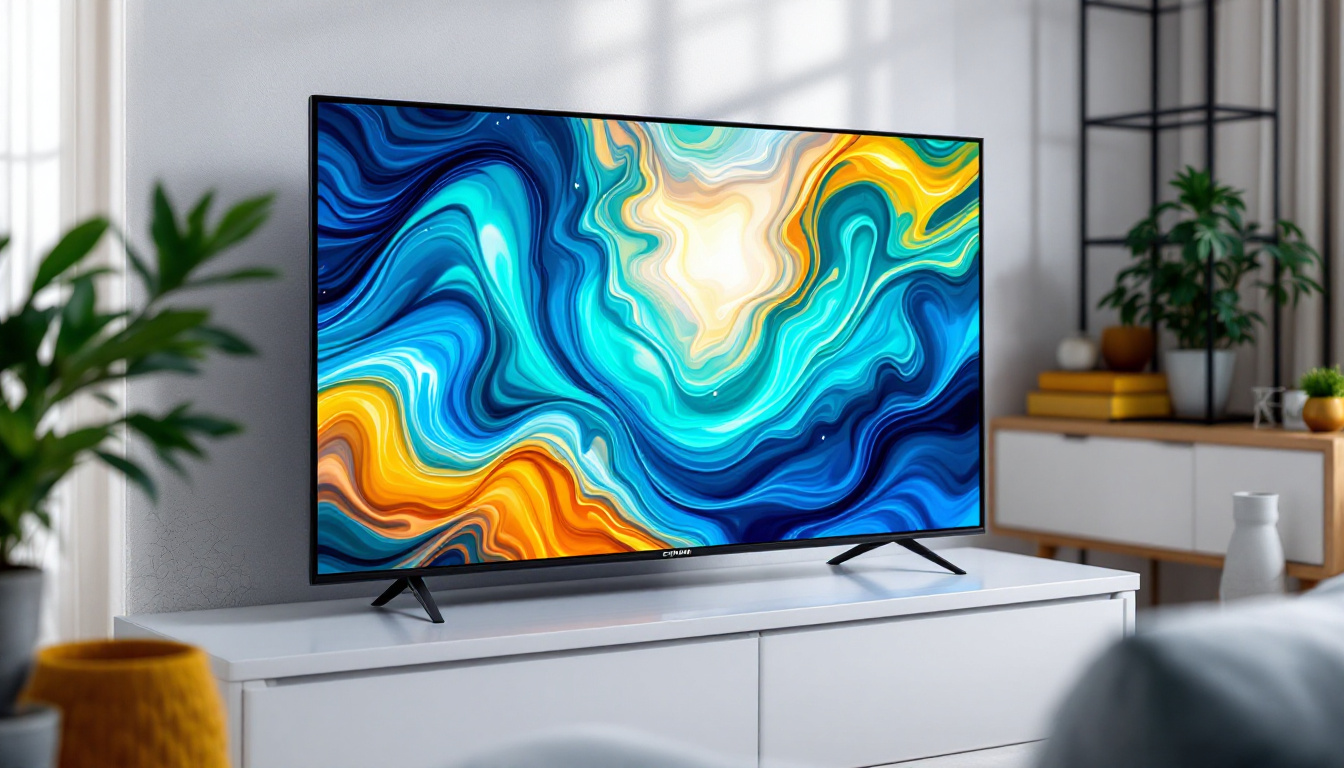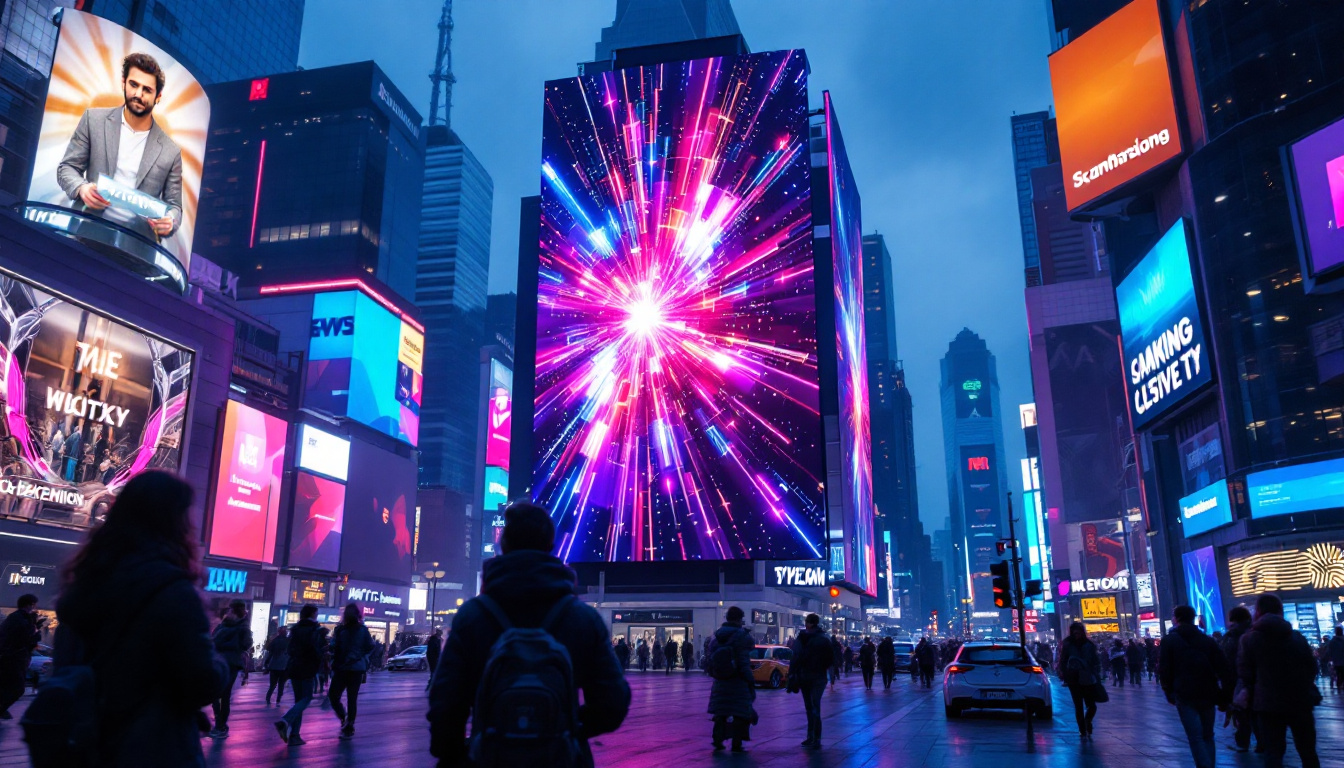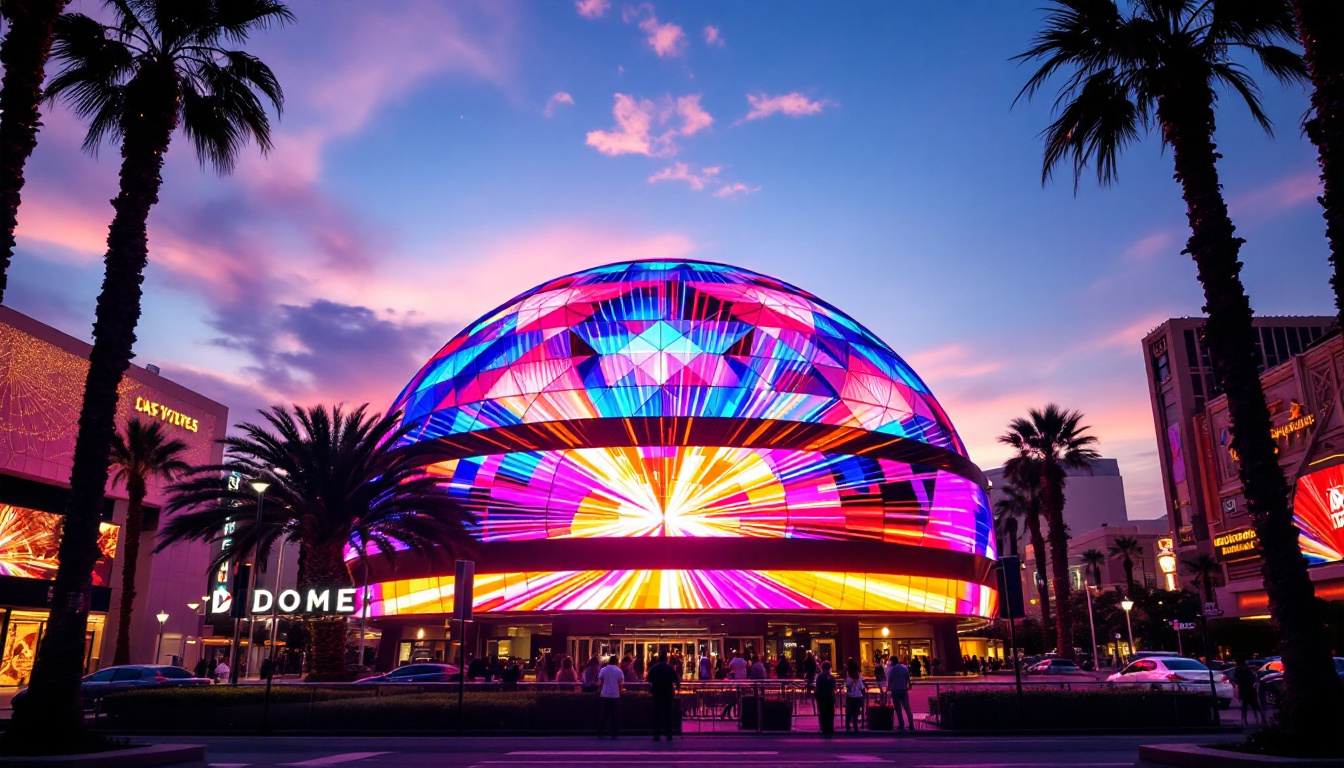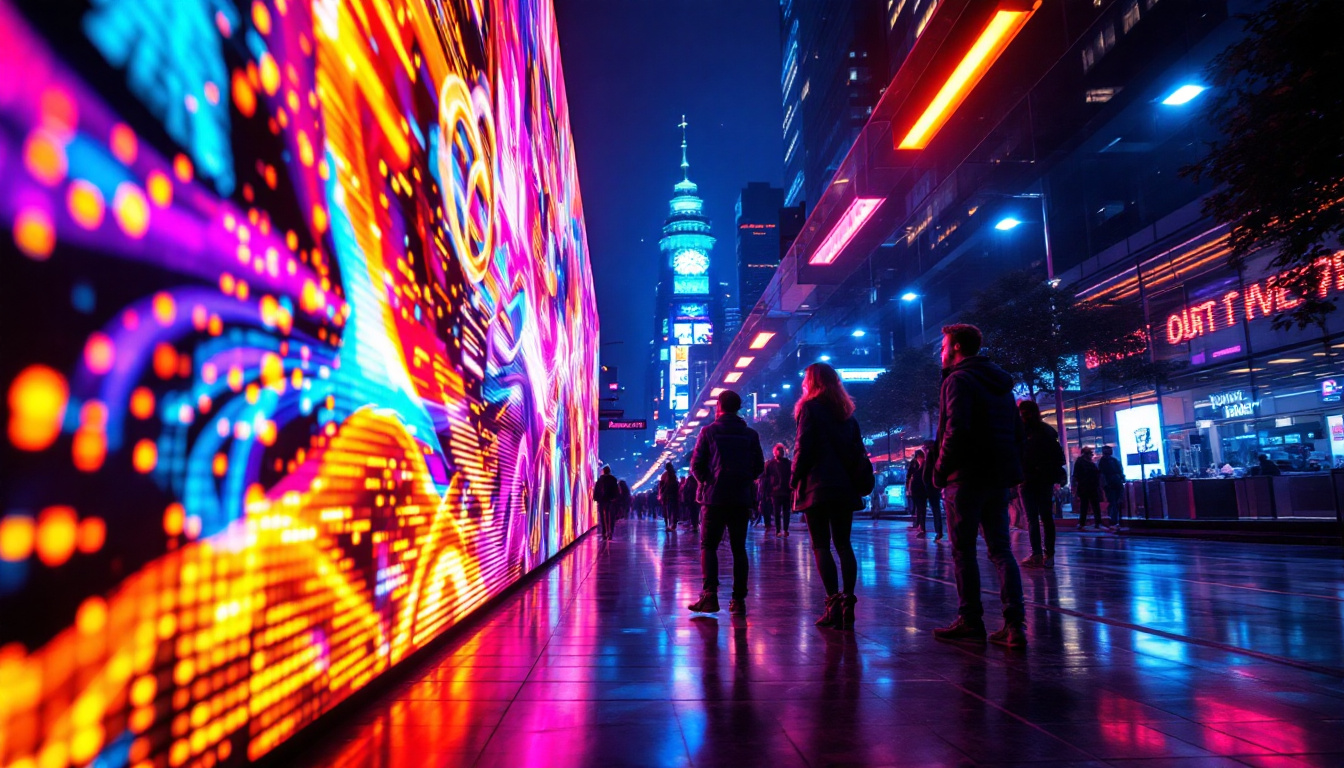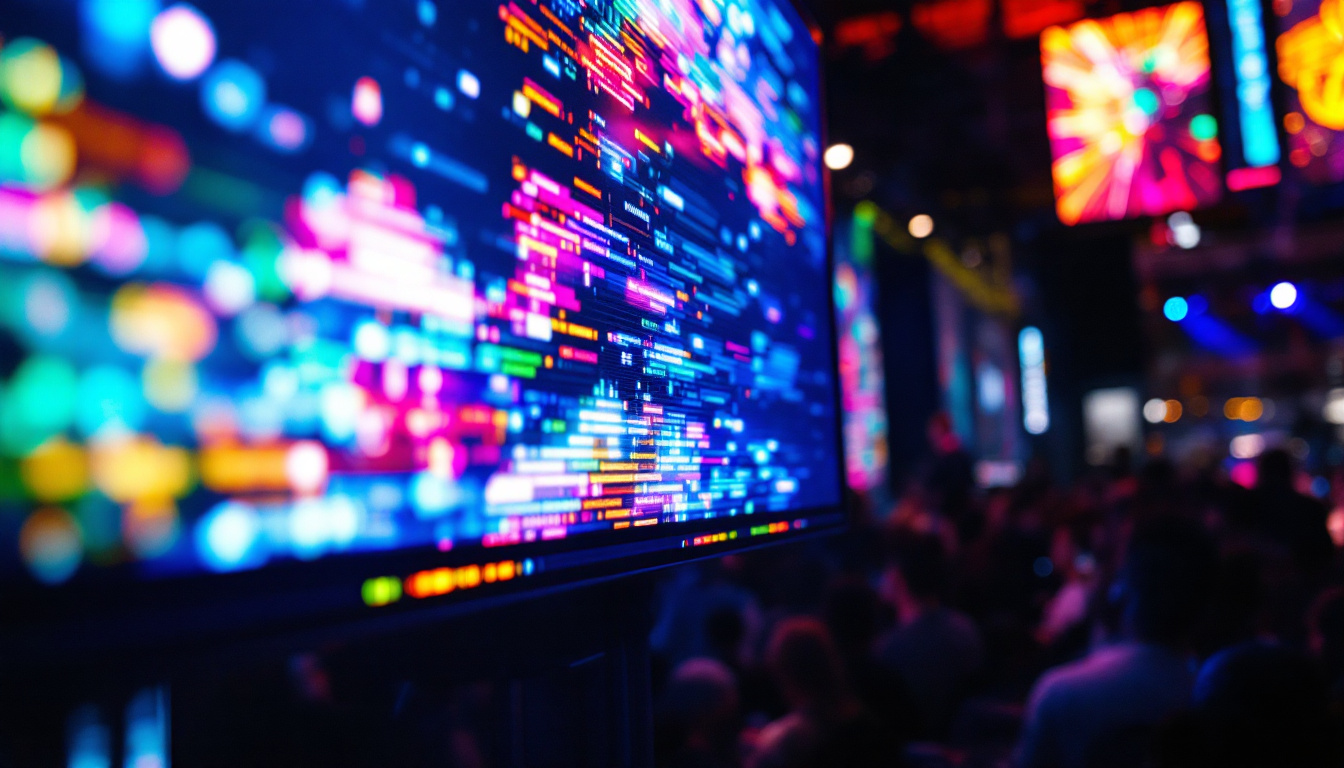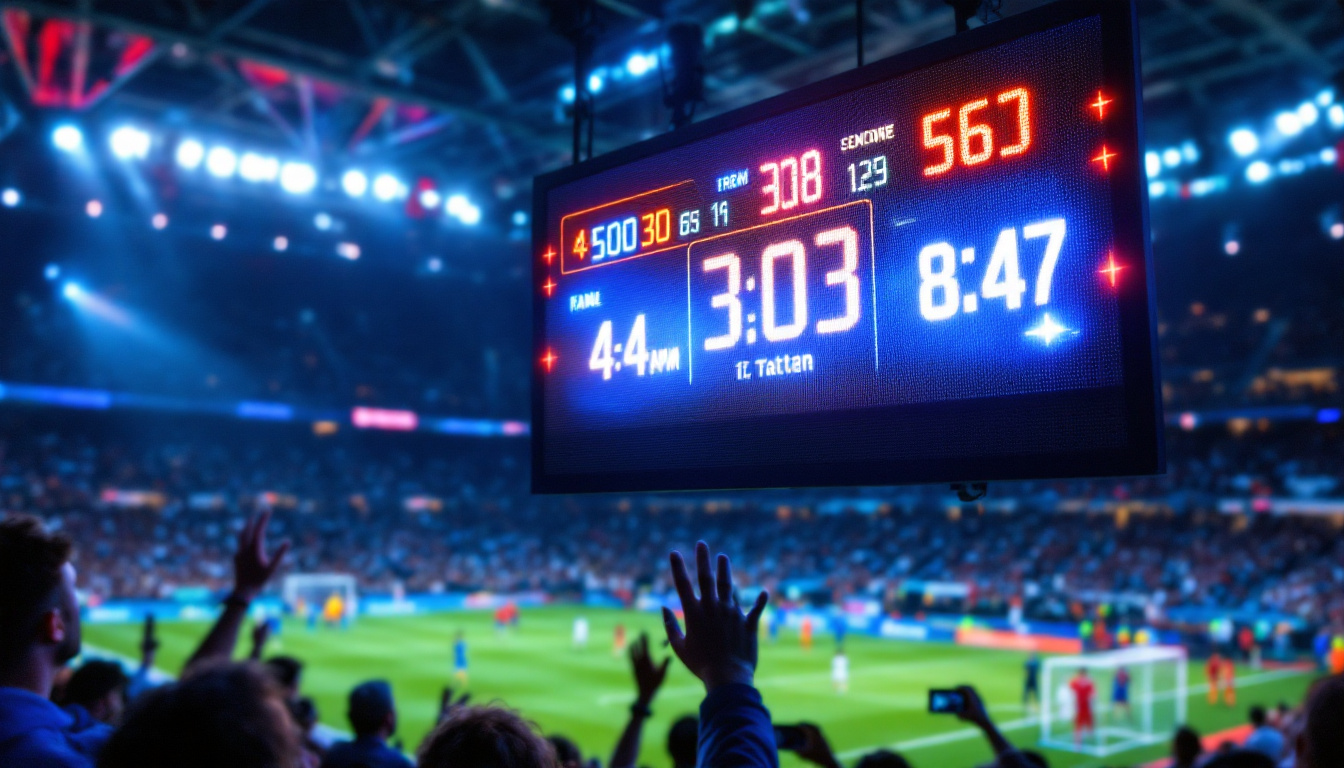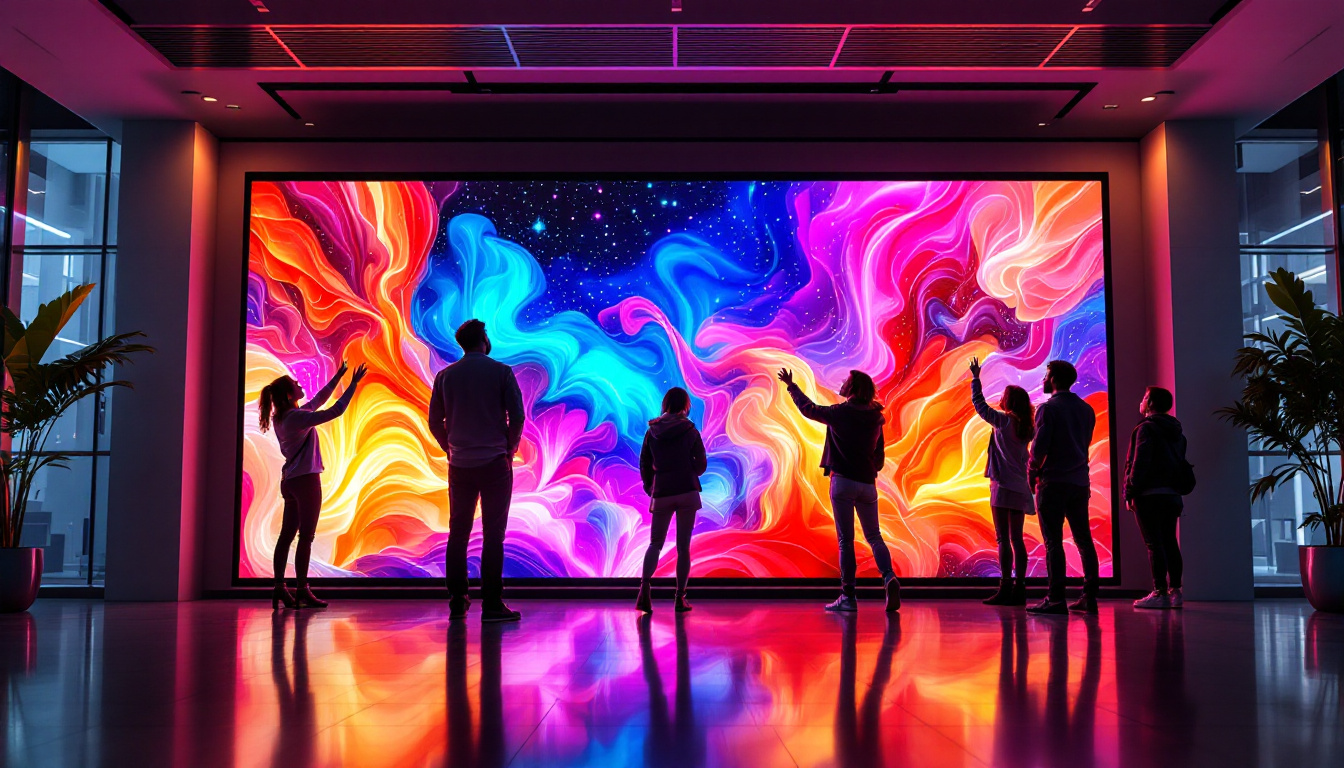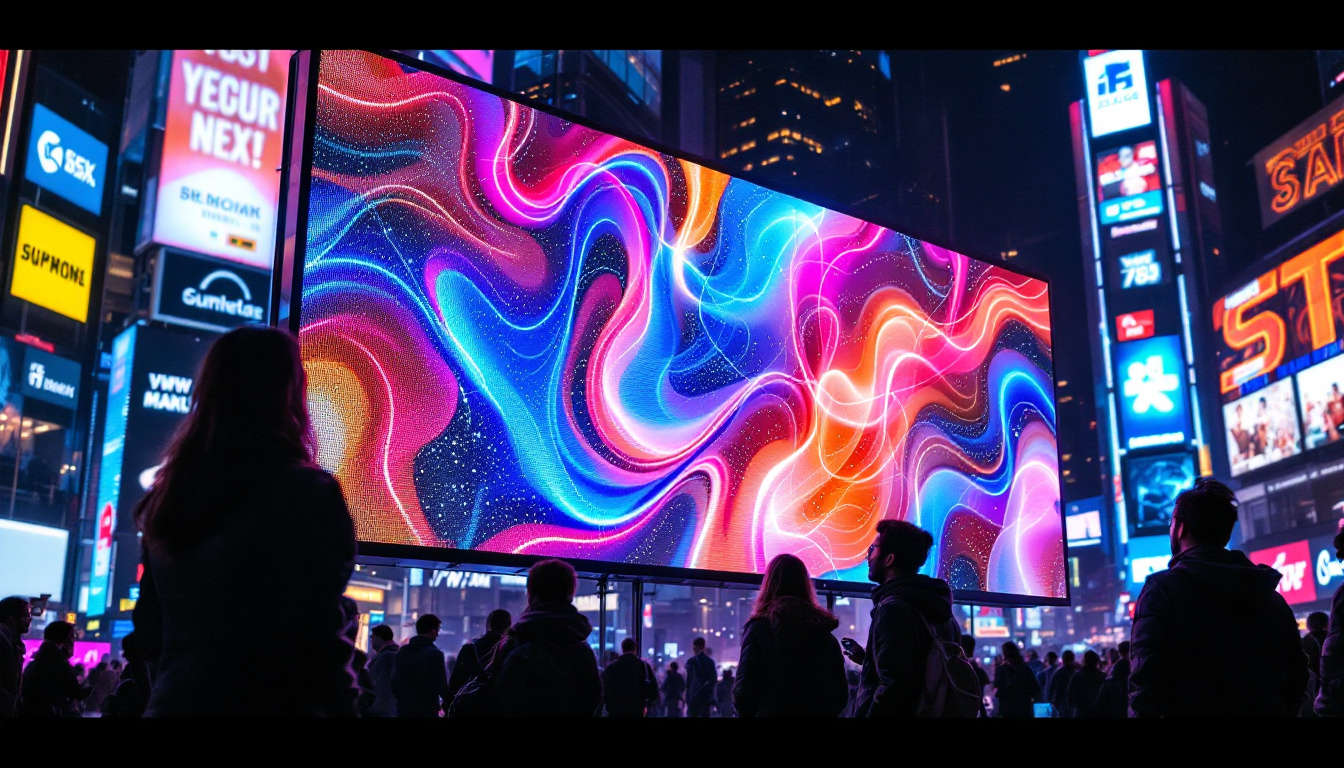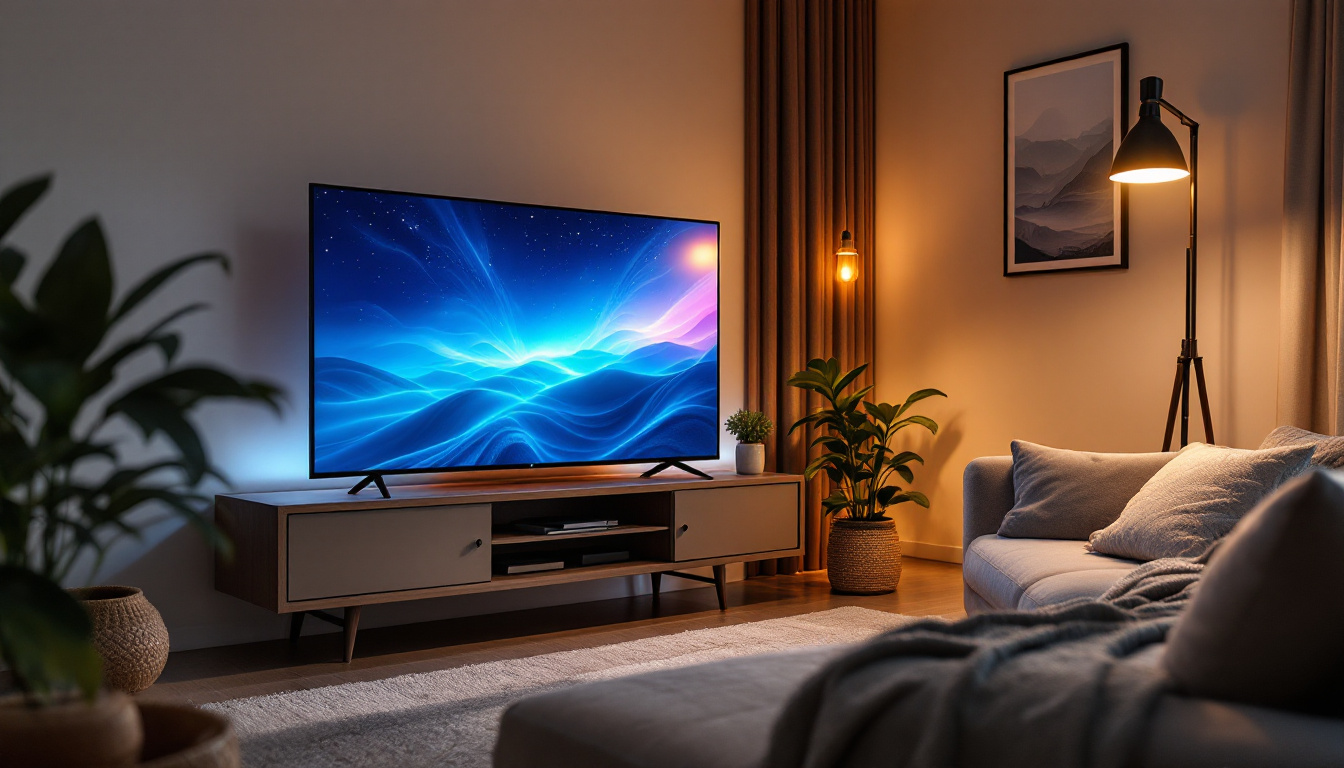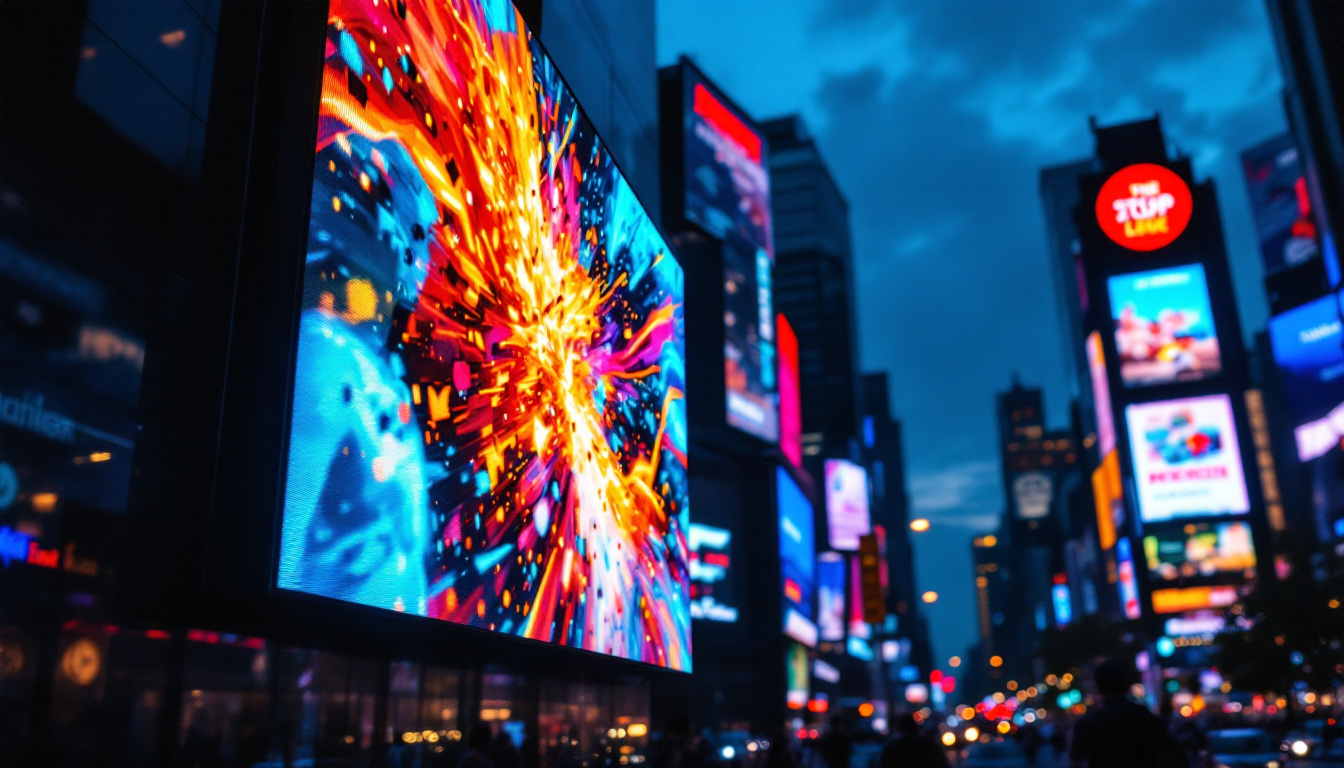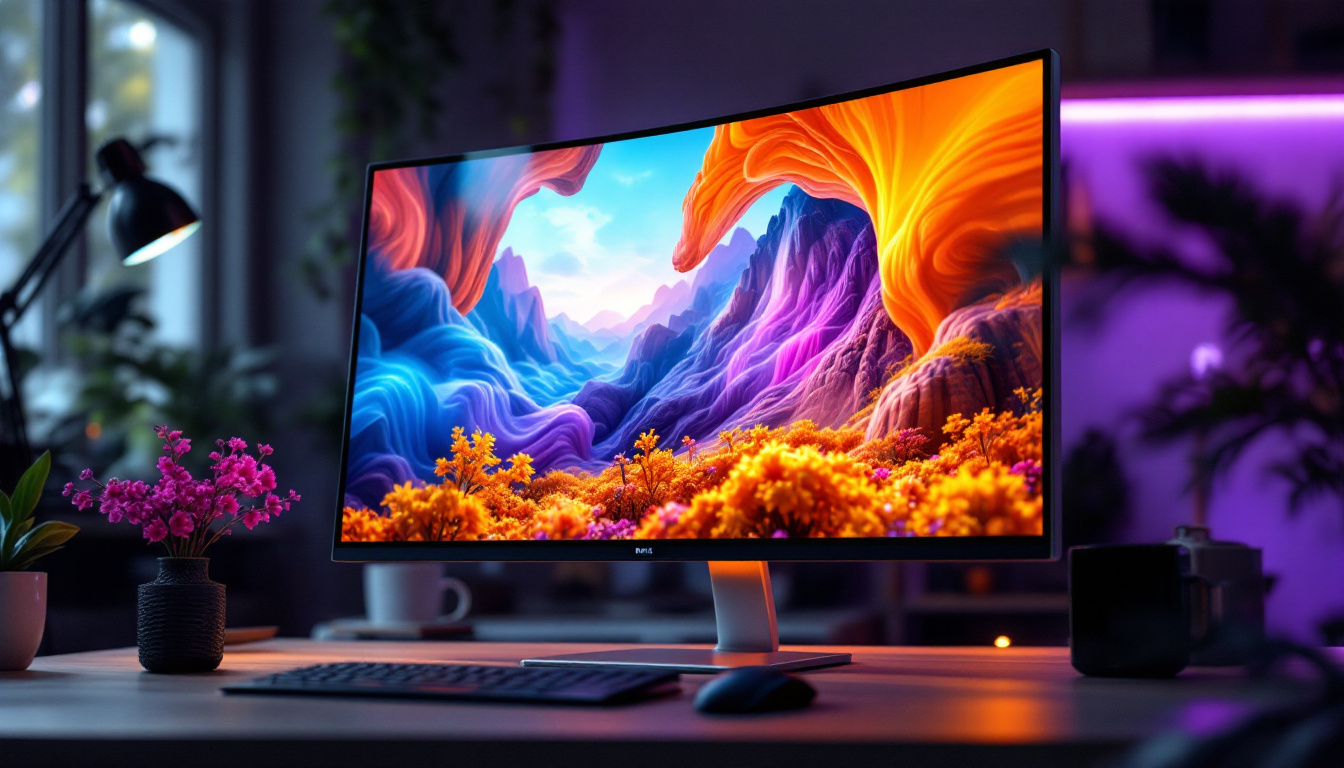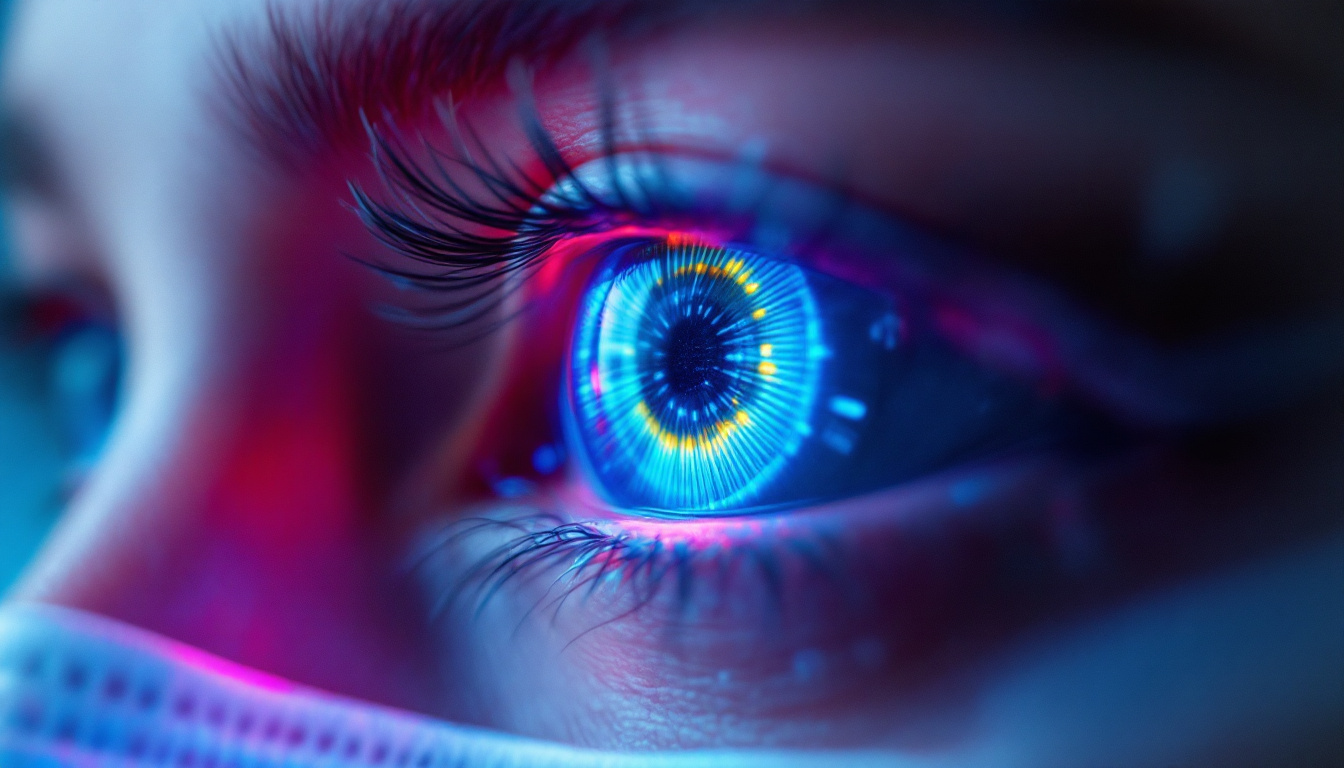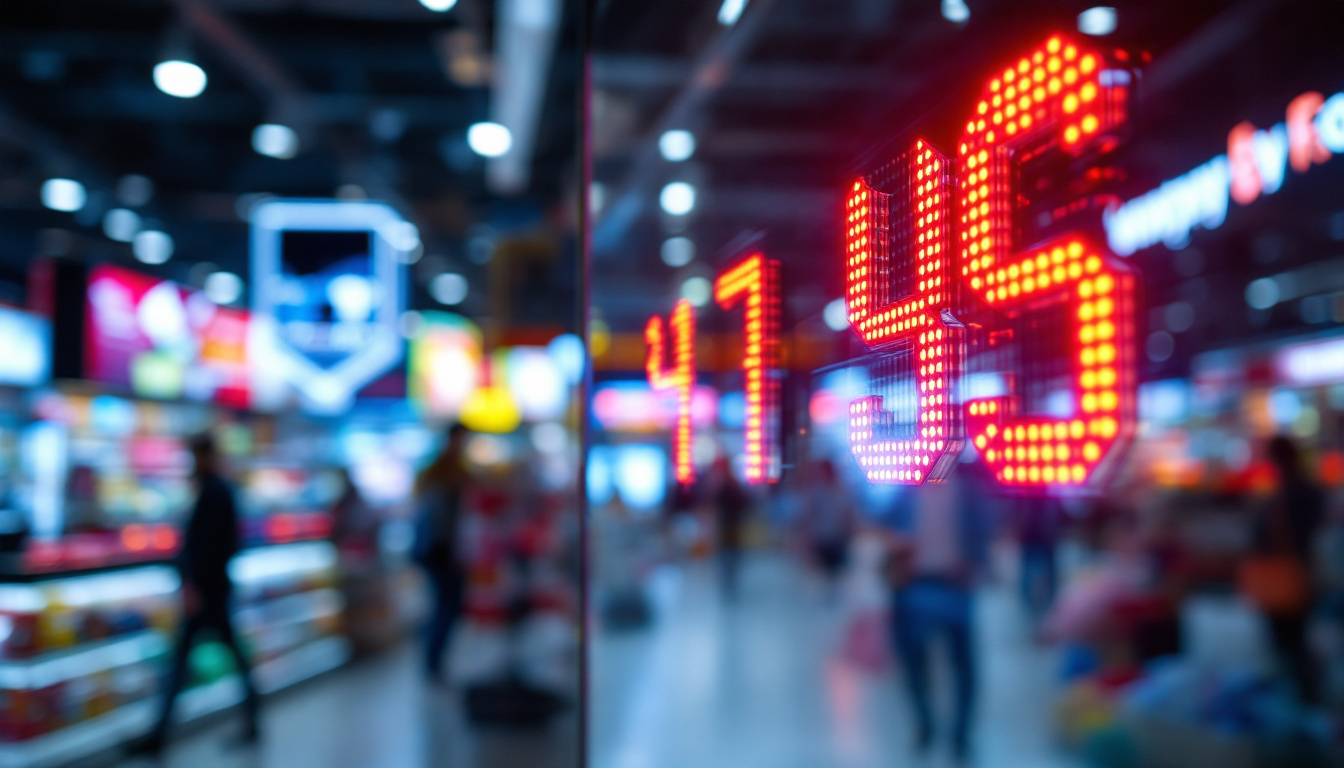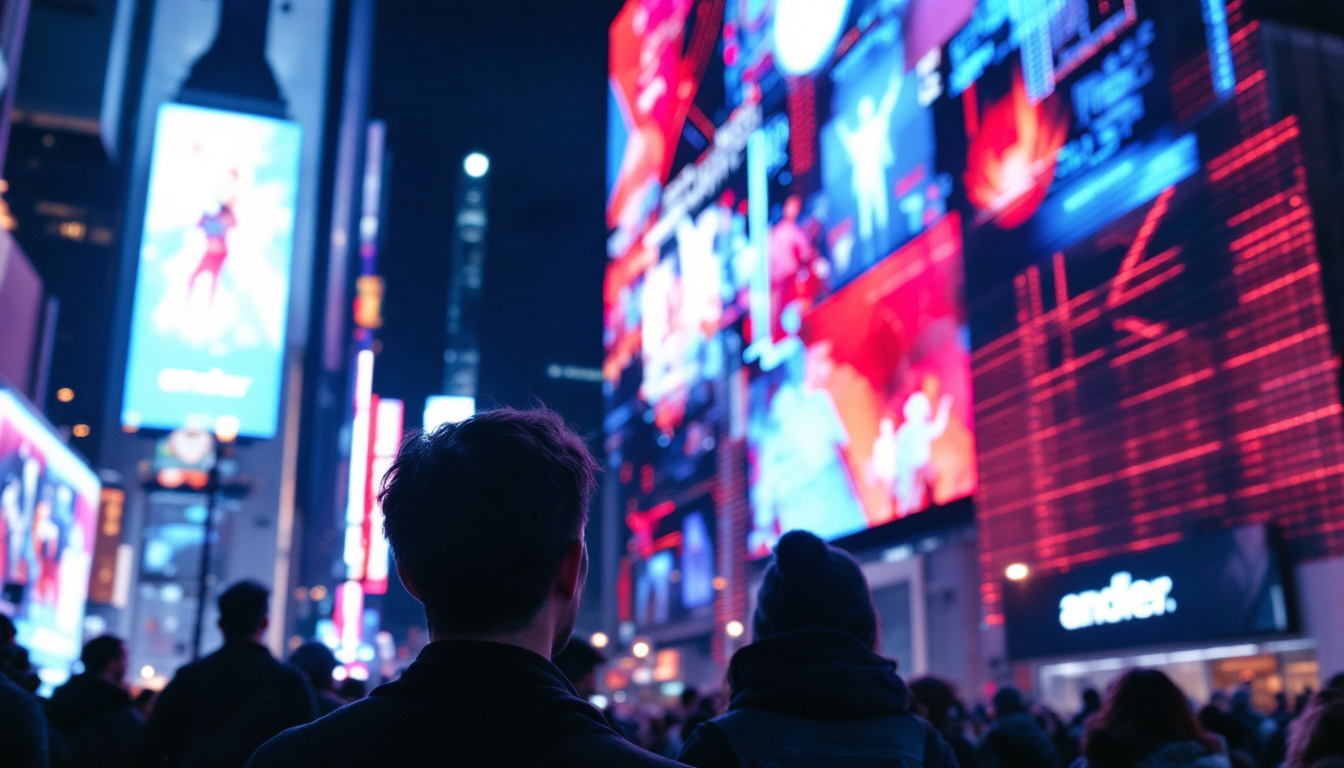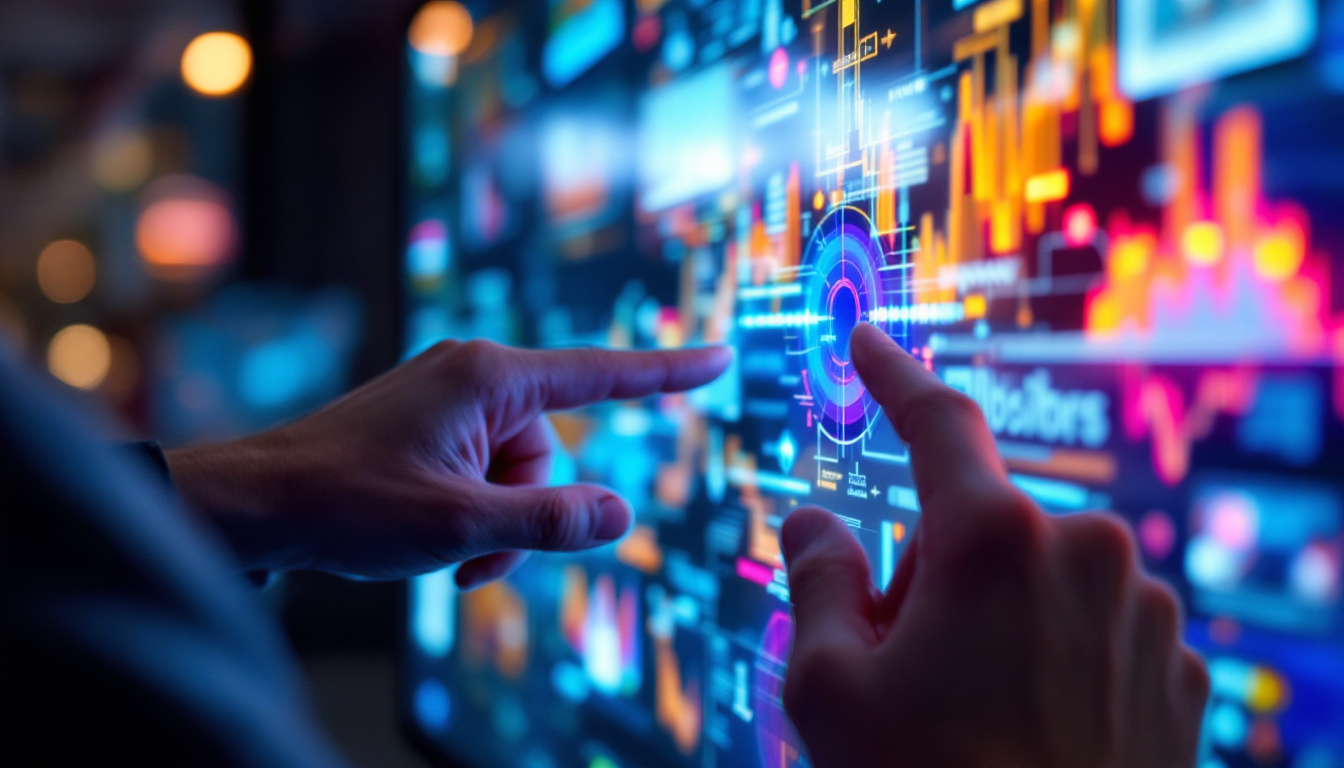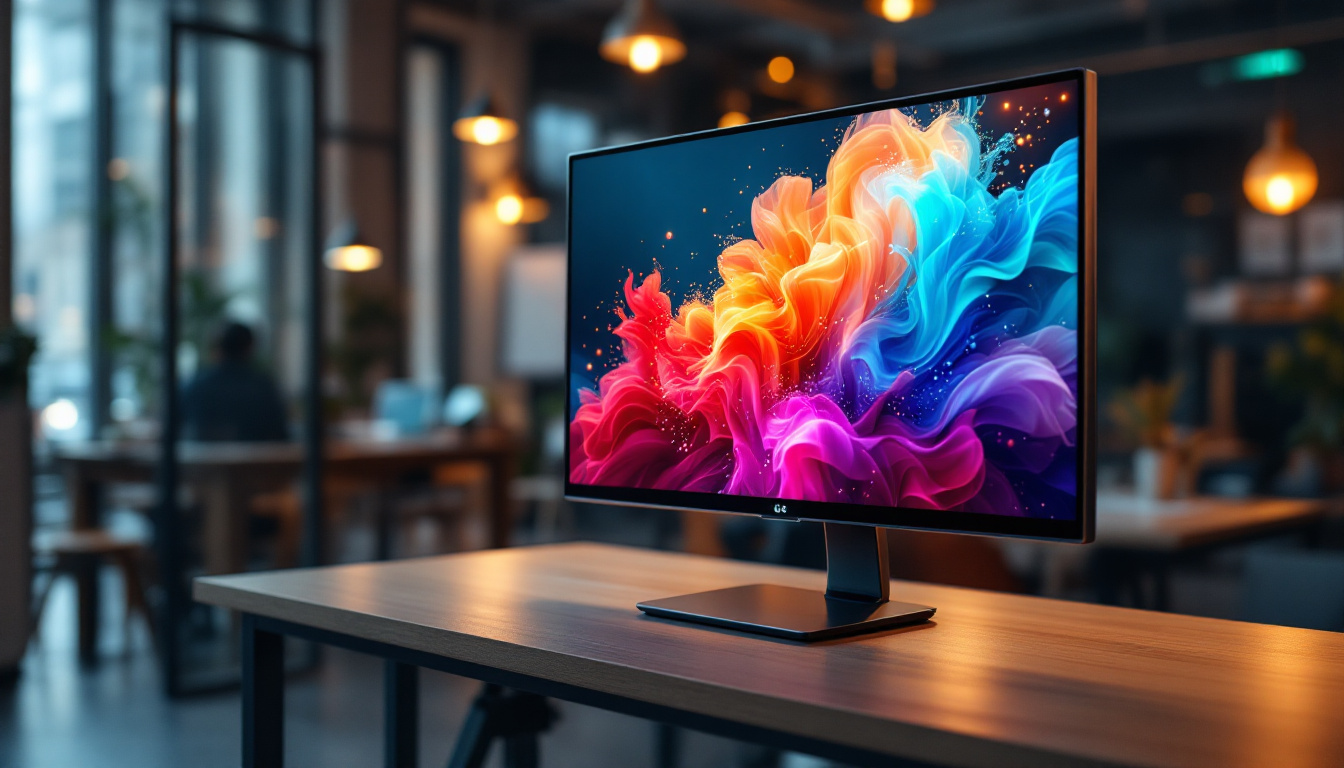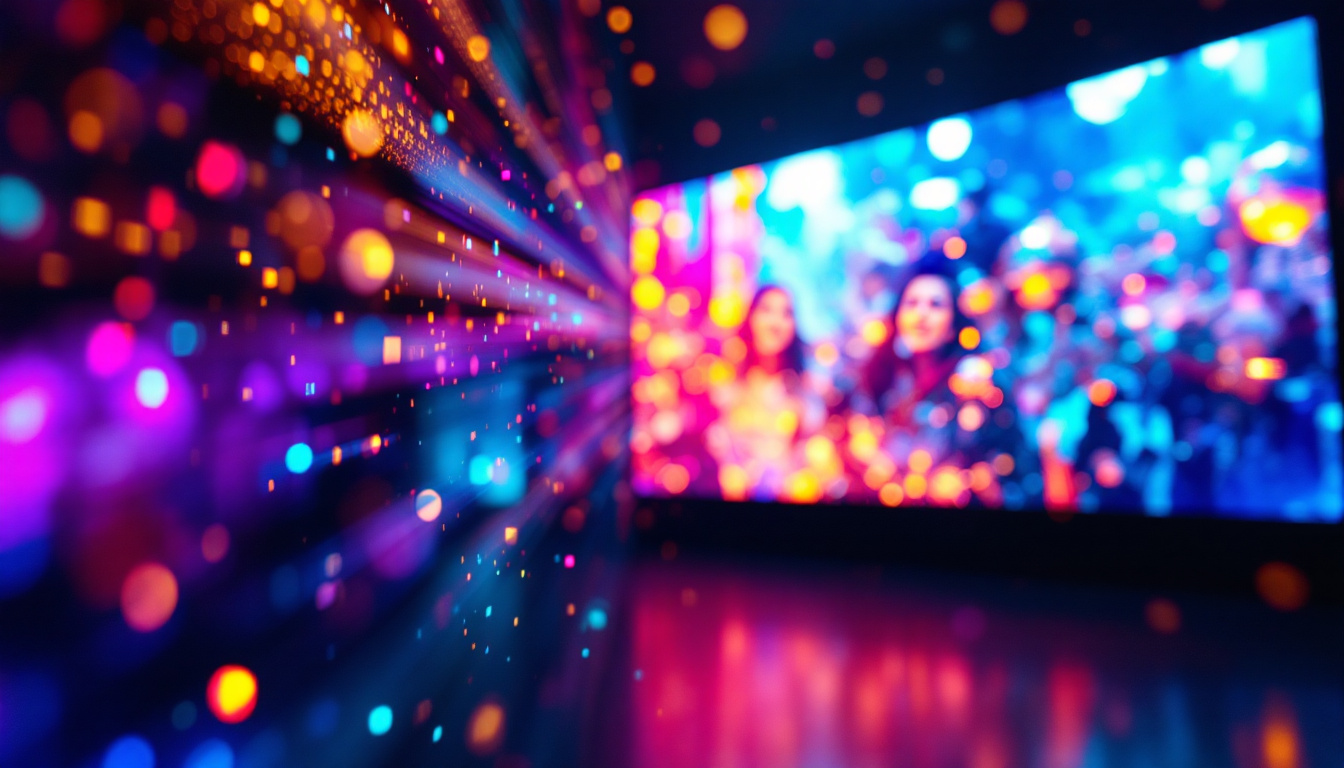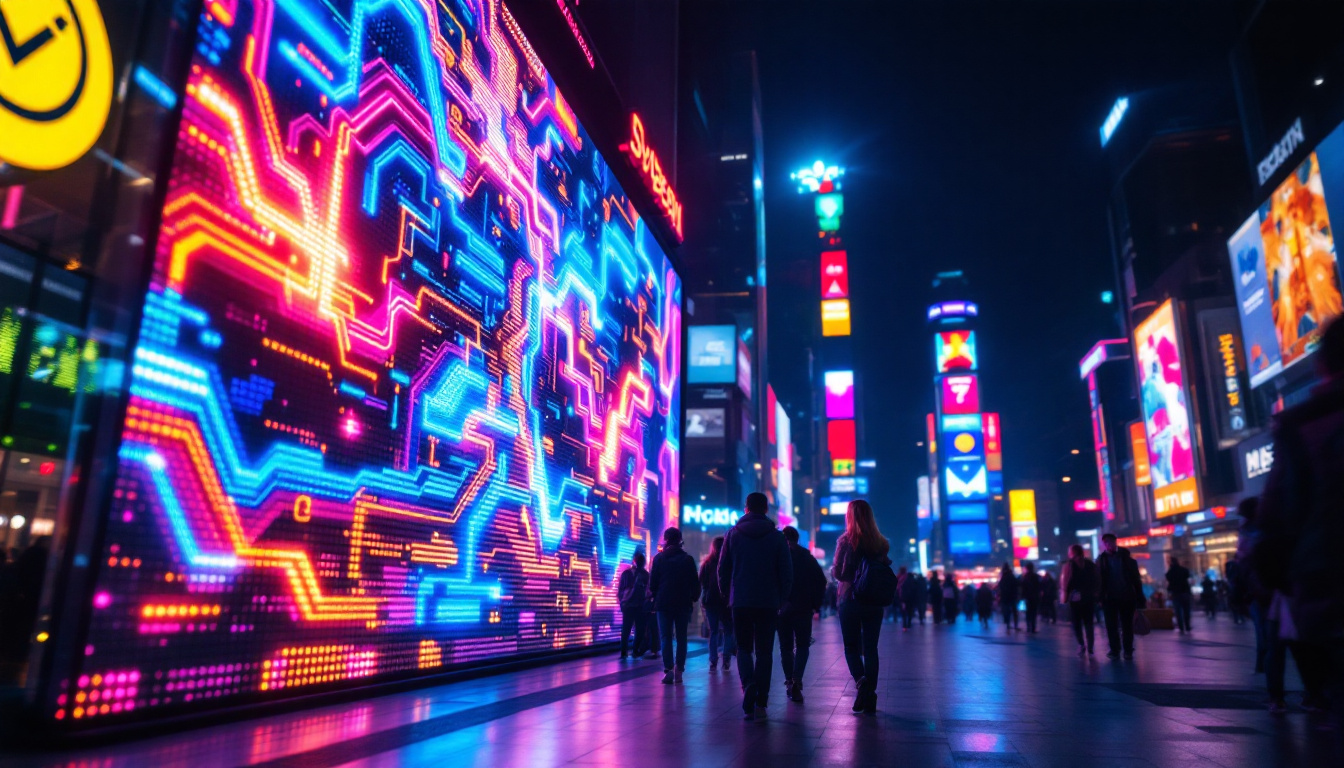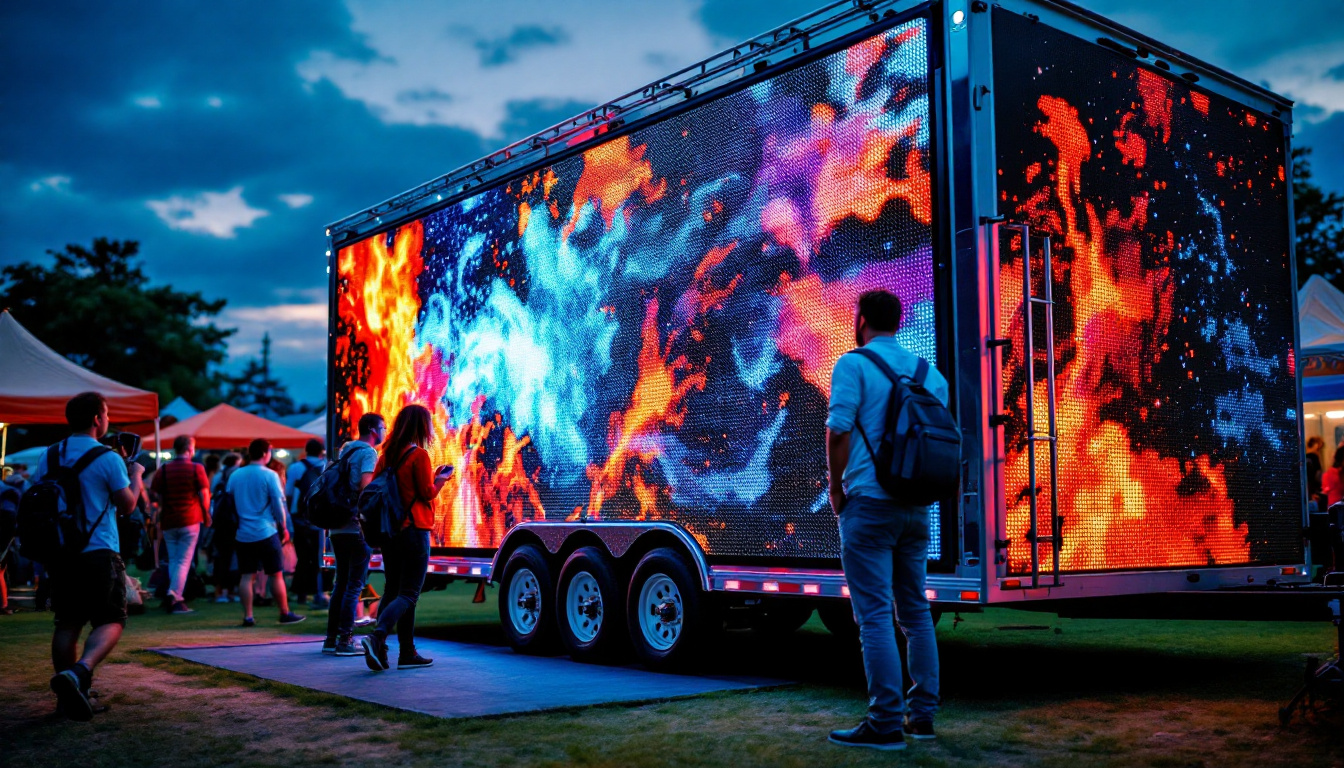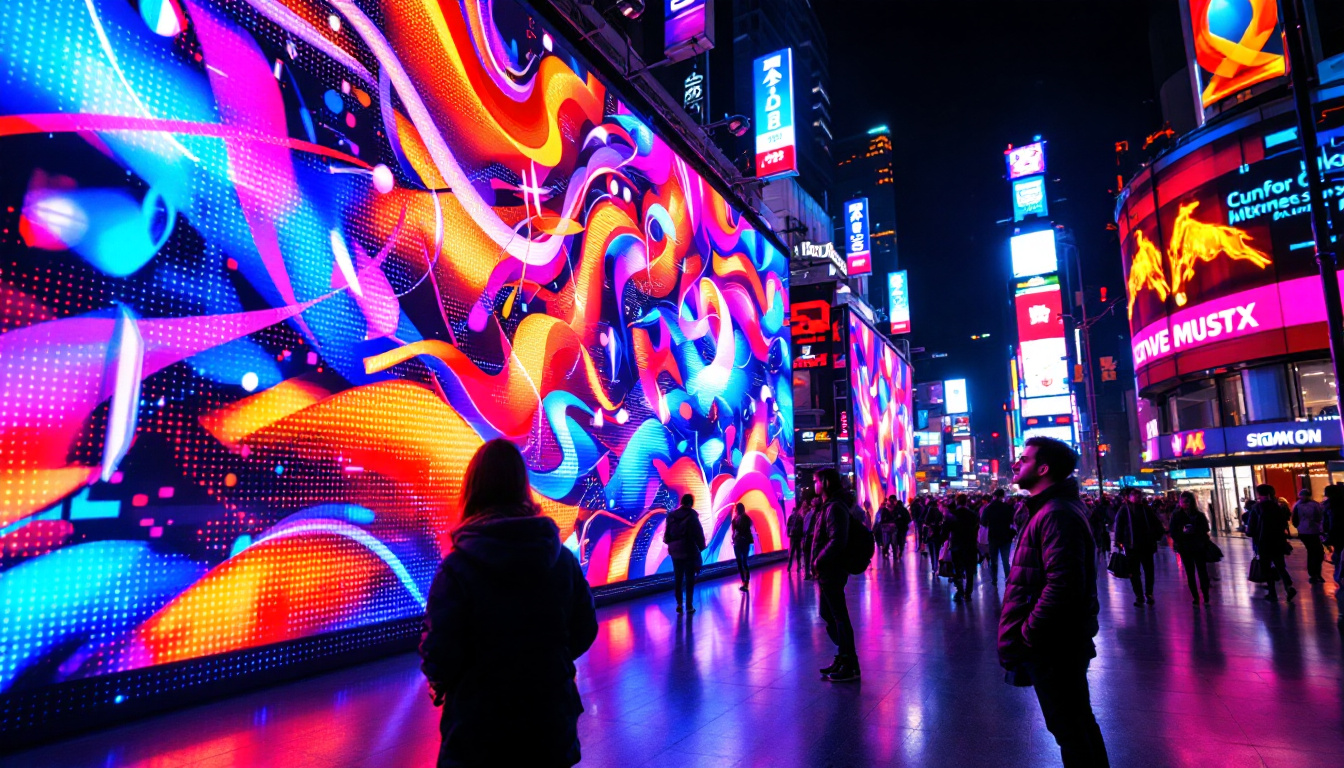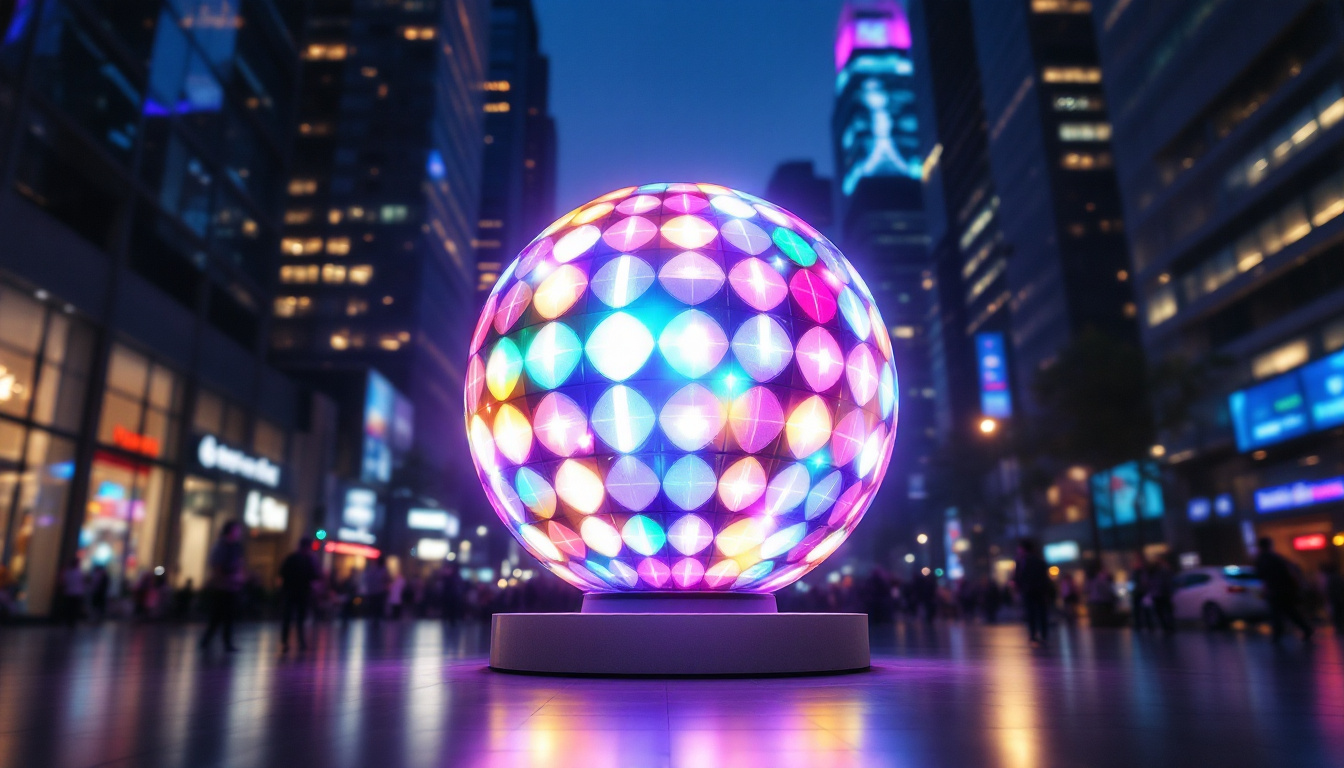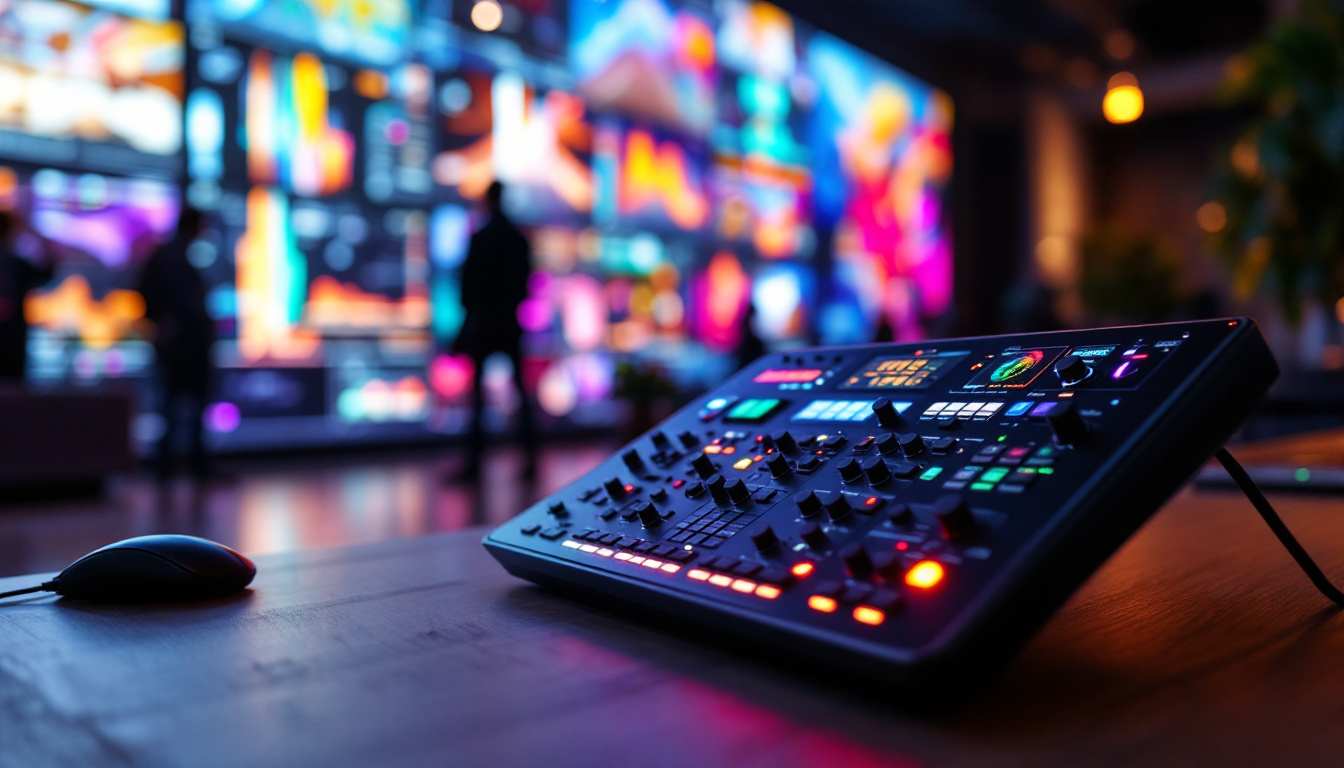In today’s fast-paced digital environment, visual communication has become a cornerstone of effective marketing and branding strategies. Among the various technologies available, LED displays have emerged as a prominent choice for businesses looking to engage their audience. This article delves into the intricacies of LED displays, exploring their functionality, applications, and advantages in the realm of wall media.
Understanding LED Technology
LED, or Light Emitting Diode, technology has revolutionized the way visual content is displayed. Unlike traditional forms of lighting, LEDs emit light when an electric current passes through them. This fundamental property allows for a range of applications, particularly in the realm of displays. The efficiency of LEDs also means they consume significantly less power compared to incandescent or fluorescent lights, making them an environmentally friendly choice. This energy efficiency not only reduces electricity bills but also contributes to a lower carbon footprint, aligning with global sustainability goals.
How LED Displays Work
LED displays consist of numerous tiny light-emitting diodes that work together to create images and videos. Each pixel in an LED display is made up of red, green, and blue (RGB) diodes, which combine to produce a full spectrum of colors. By adjusting the intensity of each color, the display can render vibrant images with remarkable clarity. The rapid response time of LEDs also allows for smooth video playback and dynamic content, making them ideal for applications ranging from advertising to entertainment. Furthermore, the longevity of LED technology means that these displays can last for tens of thousands of hours, reducing the need for frequent replacements and maintenance.
The technology behind LED displays can be categorized into two main types: direct view and backlit. Direct view LED displays are composed of individual LEDs that form the entire image, while backlit displays use LEDs to illuminate an LCD panel from behind. Each type has its own set of advantages and applications, catering to different needs in the market. For instance, direct view displays are often preferred for large-scale outdoor advertising due to their brightness and visibility from great distances, while backlit displays are commonly used in consumer electronics like televisions and computer monitors, where high resolution and color accuracy are paramount.
Types of LED Displays
There are several types of LED displays, each designed for specific uses. The most common types include:
- Indoor LED Displays: These displays are typically used in venues such as shopping malls, airports, and conference centers. They offer high resolution and brightness, making them ideal for close viewing. Indoor displays often feature advanced technologies such as high refresh rates and wide viewing angles, enhancing the overall visual experience for audiences.
- Outdoor LED Displays: Built to withstand harsh weather conditions, outdoor displays are larger and brighter. They are commonly used for billboards, sports arenas, and public events. These displays are engineered to handle extreme temperatures and are often equipped with protective coatings to resist moisture and dust, ensuring reliable performance in various environments.
- Transparent LED Displays: These innovative displays allow for visibility through the screen while still providing vibrant images. They are often used in retail environments to showcase products without obstructing the view. The unique design of transparent displays enables creative advertising solutions, allowing brands to engage customers in a more interactive manner while maintaining an open and airy atmosphere in stores.
Applications of LED Displays
LED displays have found applications across a wide range of industries, thanks to their versatility and effectiveness. From advertising to entertainment, the potential uses are virtually limitless.
Advertising and Marketing
One of the most significant applications of LED displays is in advertising. Businesses leverage these displays to capture the attention of potential customers with dynamic content. The ability to change messages quickly allows for real-time promotions and announcements, making them an effective tool for driving sales.
Moreover, LED displays can be strategically placed in high-traffic areas, ensuring maximum visibility. The bright colors and high contrast of LED technology make advertisements more eye-catching compared to traditional print media.
Entertainment and Events
In the entertainment industry, LED displays have transformed the way audiences experience live events. Concerts, festivals, and sporting events often feature large LED screens that enhance the visual experience. These displays can showcase live feeds, graphics, and animations, creating an immersive environment for attendees.
Furthermore, LED technology is also utilized in theaters and cinemas to enhance the viewing experience. The vivid colors and sharp images provided by LED displays contribute to a more engaging atmosphere, making films and performances more enjoyable.
Corporate and Educational Use
LED displays are increasingly being adopted in corporate and educational settings. In corporate environments, they are used for presentations, video conferencing, and internal communications. The clarity and brightness of LED displays ensure that information is conveyed effectively, even in large rooms.
In educational institutions, LED displays facilitate interactive learning. They can be used to display educational content, videos, and even facilitate remote learning. The engaging nature of LED technology helps maintain students’ attention, enhancing the overall learning experience.
Benefits of LED Displays
The advantages of using LED displays extend beyond their visual appeal. They offer numerous benefits that make them a preferred choice for various applications.
Energy Efficiency
One of the most notable benefits of LED displays is their energy efficiency. Compared to traditional display technologies, such as LCD or plasma, LED displays consume significantly less power. This not only reduces operational costs but also minimizes the environmental impact, making them a more sustainable choice.
Additionally, LED displays have a longer lifespan, often lasting tens of thousands of hours. This longevity further contributes to their cost-effectiveness, as businesses can enjoy extended use without the need for frequent replacements.
High Brightness and Contrast
LED displays are known for their high brightness levels, making them suitable for both indoor and outdoor environments. The ability to produce bright images ensures that content remains visible even in direct sunlight, which is particularly important for outdoor advertising.
Moreover, the contrast ratio of LED displays is superior to that of traditional displays. This means that colors appear more vibrant, and details are more pronounced, enhancing the overall viewing experience.
Flexibility and Customization
Another significant advantage of LED displays is their flexibility. They can be configured in various shapes and sizes to fit specific needs. Whether it’s a massive billboard or a small screen in a retail store, LED technology can be tailored to meet the requirements of any space.
Additionally, the content displayed on LED screens can be easily updated or changed, allowing businesses to adapt their messaging quickly. This flexibility is crucial in today’s fast-paced market, where timely communication can make a significant difference.
Challenges and Considerations
While LED displays offer numerous benefits, there are also challenges and considerations that businesses must keep in mind when implementing this technology.
Initial Investment
The initial cost of purchasing and installing LED displays can be substantial. While the long-term savings in energy and maintenance may offset this cost, businesses must be prepared for the upfront investment. It’s essential to conduct a thorough cost-benefit analysis to determine the feasibility of investing in LED technology.
Moreover, the installation process may require professional assistance, adding to the overall expense. Ensuring that the installation is done correctly is vital for maximizing the display’s effectiveness and longevity.
Content Management
Managing content for LED displays can also pose challenges. Businesses need to have a strategy in place for creating and updating content regularly. This requires resources, both in terms of time and personnel, to ensure that the messaging remains relevant and engaging.
Additionally, using high-quality visuals and animations is crucial for maintaining audience interest. Poorly designed content can detract from the display’s effectiveness, making it essential to invest in quality graphic design and content creation.
Environmental Factors
For outdoor LED displays, environmental factors must be considered. Weather conditions, such as rain, snow, and extreme temperatures, can affect the performance of the display. It’s important to choose displays that are specifically designed for outdoor use, with appropriate weatherproofing and durability features.
Furthermore, businesses should be aware of local regulations regarding outdoor advertising, as there may be restrictions on the size, brightness, and content of LED displays.
Future of LED Displays in Wall Media
The future of LED displays in wall media looks promising, with ongoing advancements in technology and applications. As the demand for high-quality visual communication continues to grow, LED displays are likely to evolve to meet these needs.
Innovations in Technology
Innovations such as MicroLED and MiniLED technologies are paving the way for even more advanced displays. These technologies offer improved resolution, color accuracy, and energy efficiency, making them ideal for a range of applications.
Additionally, developments in flexible and transparent displays are opening up new possibilities for creative advertising and design. Businesses can leverage these innovations to create unique and engaging visual experiences that capture audience attention.
Integration with Digital Solutions
As businesses increasingly embrace digital transformation, the integration of LED displays with digital solutions is becoming more prevalent. This includes the use of content management systems that allow for real-time updates and data-driven content delivery.
Moreover, the incorporation of interactive features, such as touchscreens and augmented reality, is enhancing the way audiences engage with LED displays. These advancements create opportunities for more personalized and immersive experiences, further solidifying the role of LED displays in modern marketing strategies.
Conclusion
LED displays have undoubtedly transformed the landscape of wall media, offering businesses a powerful tool for communication and engagement. Their versatility, energy efficiency, and high-quality visuals make them an attractive choice for various applications, from advertising to education.
While there are challenges to consider, the benefits of LED technology far outweigh the drawbacks. As innovations continue to emerge, the future of LED displays looks bright, promising even more exciting possibilities for businesses and audiences alike.
In an age where visual impact is paramount, investing in LED displays can provide a significant competitive edge, making it an essential consideration for any forward-thinking organization.
Illuminate Your Brand with LumenMatrix
Ready to elevate your visual communication and captivate your audience with unparalleled clarity? Discover the innovative world of LumenMatrix LED display solutions. From vibrant Indoor and Outdoor LED Wall Displays to dynamic Vehicle and Sports LED Displays, our cutting-edge technology is designed to revolutionize your brand’s presence. Explore our diverse range of products, including LED Poster Displays, Floor LED Displays, Custom LED Displays, All-in-One LED Displays, and LED Transparent Displays. Embrace the future of digital signage with LumenMatrix and create unforgettable visual experiences. Check out LumenMatrix LED Display Solutions today and transform your message into a visual masterpiece.

